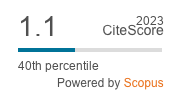Malaysian Journal of Mathematical Sciences, August 2016, Vol. 10(S)
Special Issue: The 7th International Conference on Research and Education in Mathematics (ICREM7)
The Effects of MATAS Hopscotch Technique in the Learning of Fractions Among Year 5 Pupils
Devaki Periasamy, Kamariah Abu Bakar, and Ahmad Fauzi Mohd Ayub
Corresponding Email: [email protected]
Received date: -
Accepted date: -
Abstract:
This study is to investigate the use of MATAS Hopscotch technique to solve the subtraction of three types of fractions among secondary school students. The study involved 56 pupils from two Year 5 classes. A quasiexperimental, nonrandomized control group, pre-test-post-test delayed post-test design was conducted on two intact groups, randomly assigned into control and experimental groups. Paired samples t-test was conducted to evaluate the impact of the teaching method on the pupils' scores on the test among the control and treatment groups. The findings showed there was a statistically significant increase in the pupils' scores from pre-test (M=0.43, SD = .690) to post-test (M= 9.89, SD=2.424), t(27) =-23.467, p< .05 among the control group. This finding indicated the control group showed improvement in the pupils' scores after the implementation of the traditional method. The findings also showed there was a statistically significant increase in the pupils' scores from pre-test (M=0.50, SD = .745) to post-test (M= 16.07, SD=1.676), t(27) =-53.163, p< .05 (two-tailed) among the treatment group. These findings indicated the treatment group showed improvement in the pupils' scores after the
implementation of the MATAS Hopscotch technique. However, the score gain of the treatment group was almost twice as much as that for the control group.
Keywords: MATAS Hopscotch technique, Mixed Numbers, Subtractions









